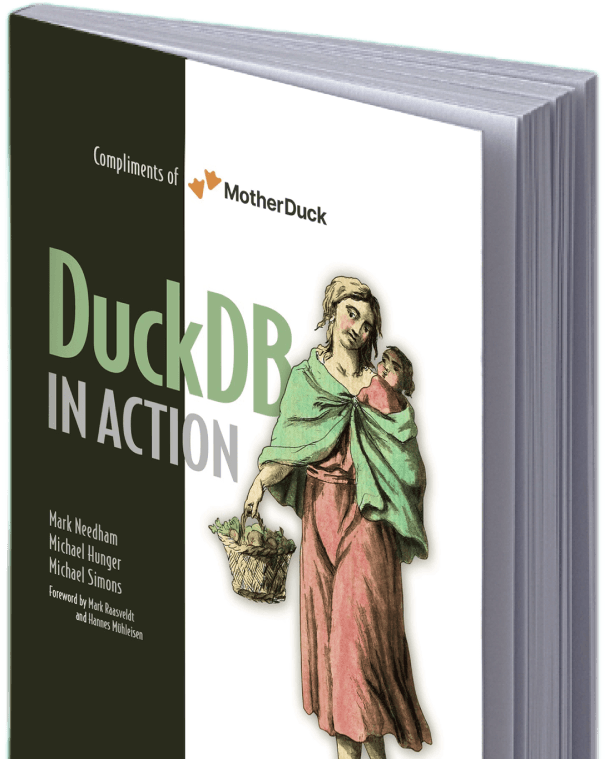3 min read
Building and Deploying Data Apps
This is a summary of a book chapter from DuckDB in Action, published by Manning. Download the complete book for free to read the complete chapter.

Building a Custom Data App with Streamlit
Streamlit simplifies the creation of interactive web apps using Python, making it accessible to data engineers and scientists who may not have full-stack development skills. By leveraging familiar libraries like pandas and DuckDB, one can build data-driven applications with ease.
What is Streamlit?
Streamlit enables the development of interactive web applications with Python, eliminating the need for JavaScript. It is particularly useful for prototyping data and machine learning apps. The Streamlit Community Cloud allows for free deployment and management of these applications.
Building Our App
Installing Streamlit and DuckDB Python packages is the first step. The application is built by creating a Python script that uses Streamlit's functions to design the interface and connect to the DuckDB database. This script includes functions to search and display player data from the database.
Using Streamlit Components
To enhance interactivity, Streamlit uses components like streamlit-searchbox for creating input fields. These components facilitate the creation of a user-friendly interface without needing to write HTML or JavaScript. The search box functionality is integrated seamlessly using Python code.
Visualizing Data Using Plot.ly
Plot.ly is a powerful library for creating interactive visualizations. Streamlit supports Plot.ly charts, making it easy to incorporate visually appealing elements into the app. By creating scatterplots and adding interactive features like vertical lines for better data presentation, users can gain deeper insights.
Deploying Our App on the Community Cloud
Streamlit Community Cloud offers a straightforward way to deploy applications. By linking the project to a GitHub repository and defining dependencies in a requirements.txt file, one can push the application to production with minimal effort.
Building a BI Dashboard with Apache Superset
Apache Superset offers a no-code, drag-and-drop interface for creating dashboards. It integrates with various databases, including DuckDB, and supports custom SQL queries and JavaScript visualizations. This makes it an excellent tool for quickly generating insights without extensive coding.
What is Apache Superset?
Apache Superset is an open-source platform for data exploration and visualization. It supports numerous databases and is highly configurable through its UI. With built-in visualizations and SQLAlchemy support, it allows for flexible data management and query execution.
Creating Our First Dashboard
Connecting Superset to DuckDB involves configuring the database connection and creating datasets from tables or custom SQL queries. Charts are built on top of these datasets and can be assembled into dashboards, providing a comprehensive view of the data.
Creating a Dataset from a SQL Query
Superset allows the creation of datasets from SQL queries, enabling more complex data analysis. By combining data from multiple tables, users can generate detailed visualizations, such as trendlines for Grand Slam winners' ages, enhancing the depth of insights available.
Exporting and Importing Dashboards
Superset's export and import features facilitate the sharing and deployment of dashboards. By exporting a dashboard as a ZIP file containing all configurations, it can be easily imported into another Superset instance, streamlining the replication of setups across environments.
Summary
Streamlit and Plot.ly offer low-code solutions for building interactive web applications and visualizations, while Apache Superset provides a no-code, drag-and-drop alternative for creating dashboards. Both tools integrate seamlessly with DuckDB, catering to different levels of coding expertise and project requirements.


